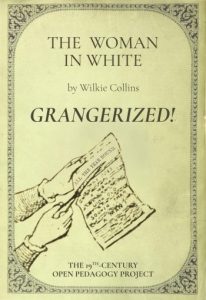Abstract
The current academic job market presents PhD students and advisors with a forking path. One approach is to be the best at the established game—to publish more, to present at the most prestigious national conferences, and to write a dissertation that academic job committees will immediately recognize as having all of the hallmarks of a future book. The other path—one which scholars such as Leonard Cassuto, Eric Hayot, Whitney Ross Manzo, and Kristina M.W. Mitchell encourage us to pursue—is to rethink our approach to the dissertation process in the face of an expanding range of roles for humanities PhDs. So, what might that second path involve? What does it look like to take job market materials and tenure dossiers out of the picture when conceiving of a dissertation’s structure? In this project, I consider this question by highlighting a set of motivating principles and use these principles to inform my dissertation’s design.
This examination leads me to some of the central questions in this dissertation project: what does it look like to compose scholarly and educational texts about the nineteenth century that embrace a wider range of authors and audiences than the conventional Western academy has included up to this point? What traditions and emerging practices need to alter or expand in order to promote this inclusivity? How can literary studies scholars use our abilities to close read, to analyze forms, and to critique media institutions in ways that allow us to invite more participation with our work?
My dissertation project turns to open pedagogy and critical information studies as lenses through which to understand Victorian serial fiction’s place in 21st-century educational dialogues. Although pedagogy is often left out of research monographs, there is an increasing push for scholars to integrate the work we do as educators with our subject-specific research (Stommel and Morris). Indeed, there is a substantial overlap between the questions that media studies scholars are asking about nineteenth-century print culture and emerging discussions about how we teach, and my dissertation highlights these connections as one way of applying a novel perspective to literary studies scholarship.
These questions redefine the ‘final products’ I hope to contribute to the field through this dissertation process. Johanna Drucker has observed that “the task of designing an interface is probably the best exercise in reading one can provide,” and this dissertation embraces this praxis-oriented approach. Instead of comprising a proto-monograph, I construct a pair of public-facing resources that intervene in contemporary modes of teaching Victorian studies. The first resource, The Woman in White, Grangerized is an open, participatory volume edition of a nineteenth-century serial novel as it was published in its original periodical format. This resource incorporates SoTL-informed active learning strategies for engaging with literary texts. This second text, the “Un-dissertation” that you are reading at this moment, explores the principles that researchers, educators, students, and enthusiasts might use to interrogate and resist systemic forces of exclusion in academic writing.

SoTL is the acronym for the Scholarship of Teaching and Learning, a field of inquiry that explores instruction and assessment strategies using evidence-based research methods. Osman and Hornby describe SoTL as a set of practices that "[provide] an opportunity to re-examine and in some instances confirm one’s epistemological and philosophical orientation as teachers as well as recognise the political nature of our work" (Osman and Hornby 7).

